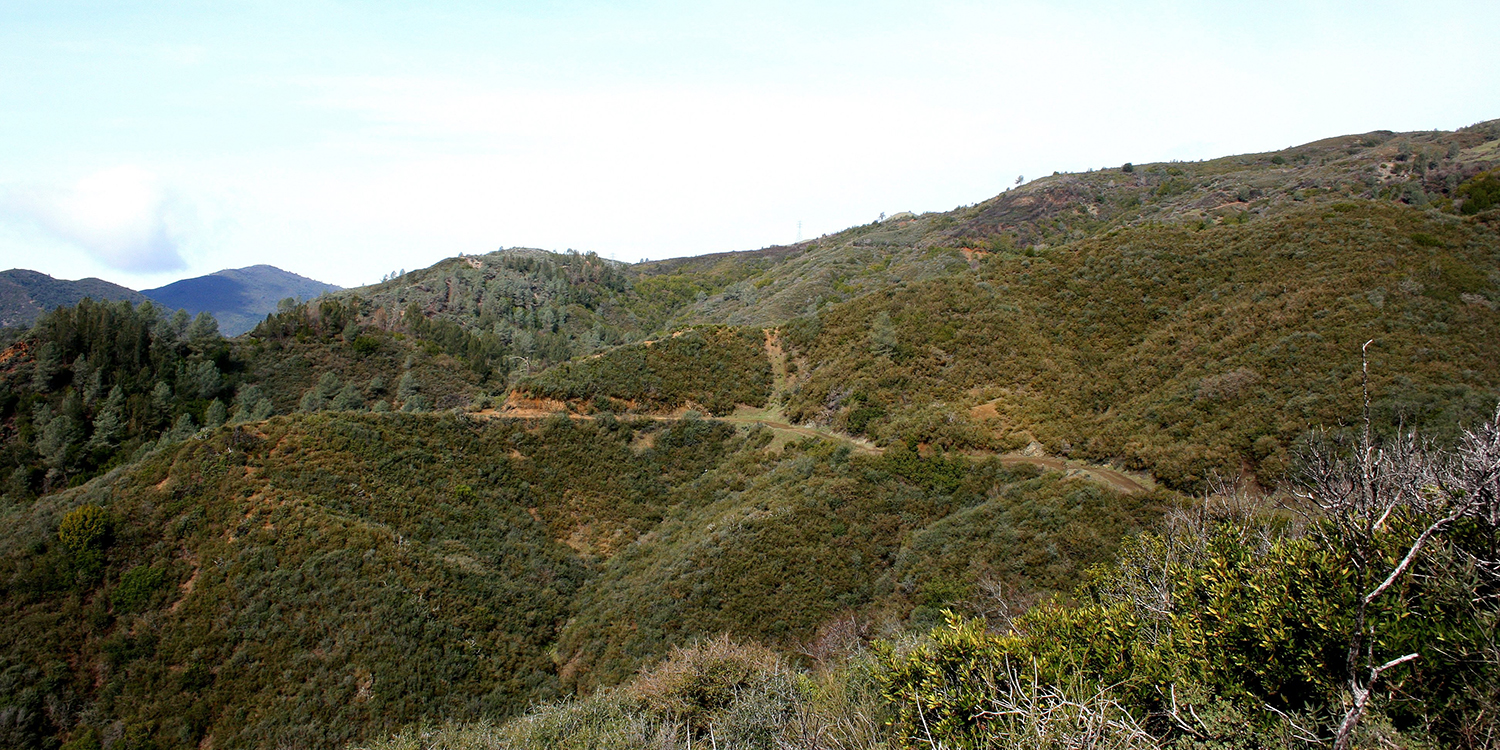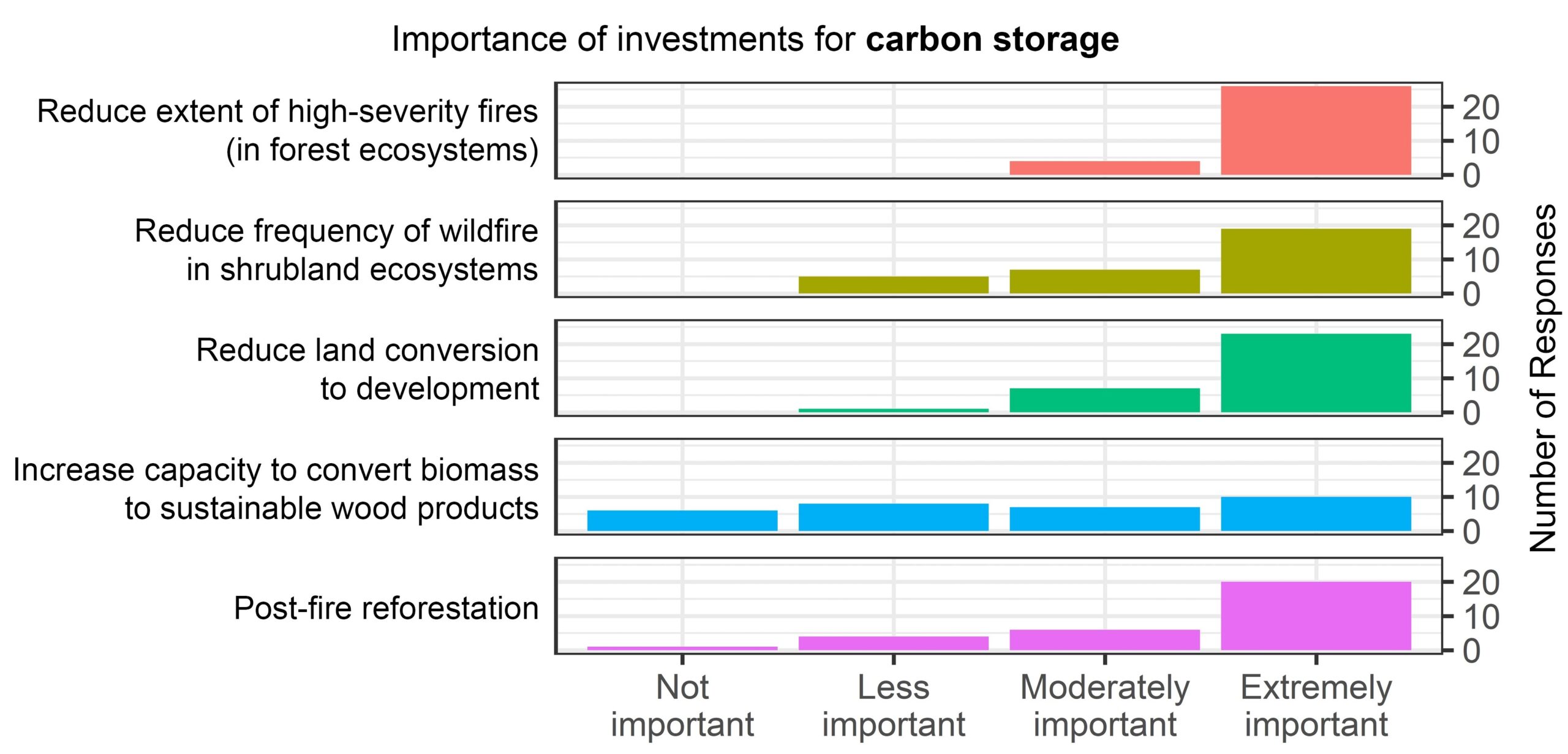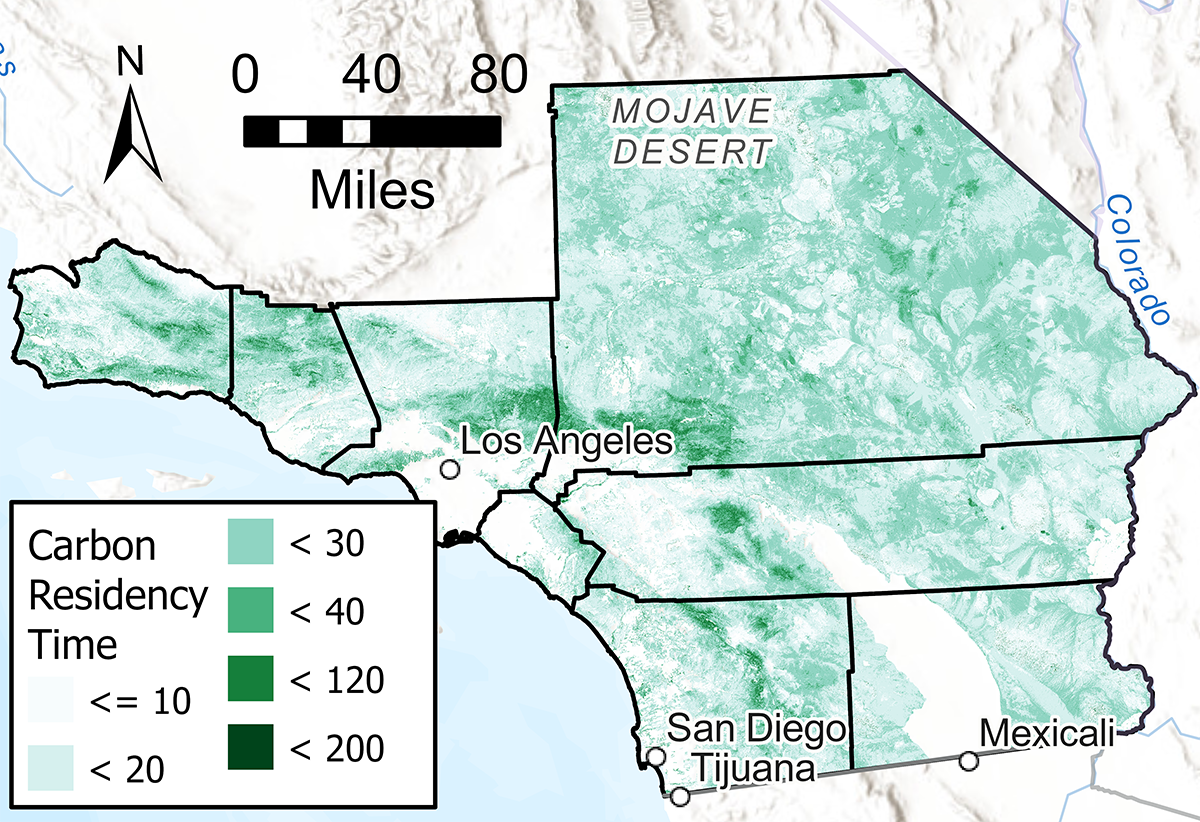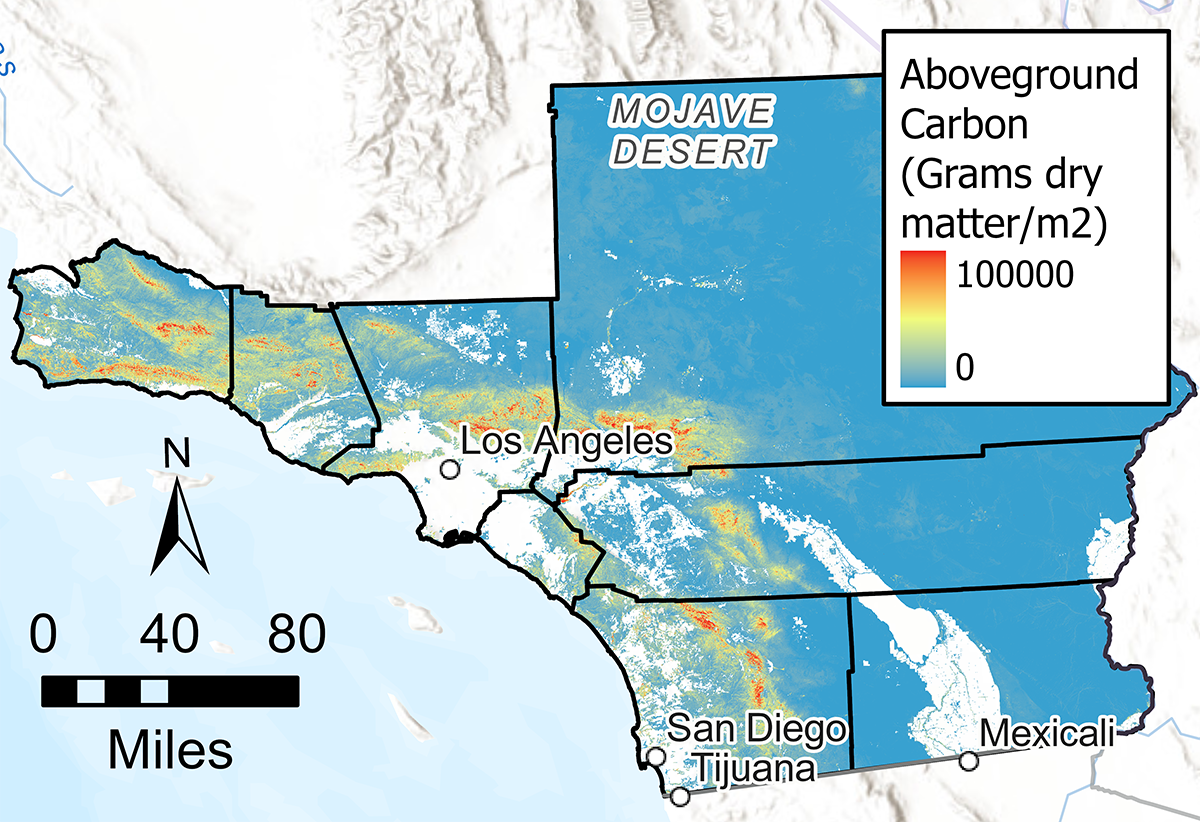Southern California Regional Profile
CARBON STORAGE

Overview
Managing California’s natural lands for stable carbon storage and sequestration is essential to state efforts to achieve carbon neutrality and increase resilience to climate change. Forests and shrublands store 85% of California’s carbon stock. Climate change and wildfire are expected to cause forests and shrubland carbon stocks to decline over the next two decades. Losses of forest carbon stocks are already being observed in Southern California; in fact a recent state inventory of carbon found that Southern California was the only region where tree mortality was exceeding tree growth, resulting in an estimated net carbon reduction of the live tree pool. Fortunately, management actions can lessen this loss by reducing carbon emissions and increasing carbon sequestration.
Treatments that focus on reducing the risk of high-severity, stand replacing wildfires can protect forest carbon stores. Thinning overly dense forests can lead to initial losses of carbon but ultimately what was lost may be regained and stored more securely in the retained large trees. Fuel treatments (including mechanical, prescribed and managed wildfire) that reduce surface fuels, shrubs and other understory biomass, and small diameter trees can indirectly benefit carbon storage by decreasing the risk of crown fires, which would threaten carbon stored in live trees. Carbon losses from mechanical thinning treatments can also be further mitigated if the removed biomass is converted into durable wood products, which continue to store carbon, or bioenergy, which can substitute for more carbon-intensive energy production.
Carbon stores can also be protected by reducing the spread of disease or invasive pests, such as the goldspotted oak borer [see ‘Healthy and Resilient Forests’], that cause tree mortality. Additionally, where tree mortality has occurred, proactive reforestation and invasive species management can protect forest habitat from converting to vegetation types that store less carbon and that may be more flammable.
Forests sequester and store a higher density of carbon than shrublands and shrublands sequester and store a higher density of carbon than grasslands. The carbon turnover time of forest stands is generally much longer because trees can live longer than shrubs. However, given the extensive area that shrublands cover, especially in Southern California, protecting the carbon storage value of shrubland ecosystems is significant to the success of regional and state carbon sequestration goals.
The amount of carbon stored in shrubland communities varies depending on vegetation type and age class. Aboveground biomass is on average highest in mixed chaparral, and tends to be significantly lower in chamise dominated chaparral and coastal sage scrub. In all of these plant communities, vegetation that experiences less moisture-stress tends to be more productive and thus sequester more carbon than drought stressed plants. This means that Southern California shrublands may sequester less carbon if increased drought stress occurs under climate change, or may sequester more carbon if precipitation and water runoff increases in the future as some climate models project.
Older shrub stands, especially stands over 30 years old, generally have higher biomass than younger stands. However, mature stands are becoming rarer due to shorter fire return intervals [see ‘Healthy and Resilient Shrublands’ section]. Too-frequent fire is also driving the conversion of chaparral and coastal sage scrub ecosystems to grasslands, which contain only a fraction of the carbon. For this reason, reducing the conversion of shrublands to grasslands benefits carbon storage. Actions to limit this conversion, such as reducing human-caused ignitions and managing invasive species, can offer co-benefits in the form of reducing wildfire risk to communities and protecting critical habitat.
Stakeholder Perspectives

Most survey respondents rated reducing the extent of high-severity fires in forest ecosystems as extremely important for achieving large and stable carbon stores. Reducing the conversion of natural land to development was also perceived to be a top priority by the majority of respondents. There was less consensus among respondents on the importance of increasing capacity to convert biomass to sustainable wood products.
Interviewees noted that regional carbon stores are being lost due to the conversion of natural lands to human development and disruptive vegetation treatments. One interviewee noted that vegetation treatments in Northern California forests can promote retention and growth of larger trees, which store more carbon and are more resilient to wildfire. However, the same approach does not yield the same benefits in Southern California’s chaparral ecosystems; instead, vegetation treatments reduce biomass and generally result in carbon loss.
.
Resource Conditions


The Regional Resource Kit relies on two metrics to assess carbon storage on the landscape: total aboveground carbon (A) and average carbon turnover time (B). The total aboveground carbon is the amount of carbon present in all live and dead trees, shrubs, herbaceous vegetation, and dead material on the ground. Total aboveground carbon is important because preserving carbon stored in natural systems is generally desirable for management goals, so understanding the magnitude of carbon stored on a landscape may help inform the location and type of treatment activities. Average carbon turnover time is a measure of carbon stability; it assesses the average lifetime of aboveground live and dead carbon in years. Locations with larger values have a longer turnover time and, therefore, more carbon in more stable pools, such as large trees or large coarse woody debris. In Southern California some of the locations with the longest carbon turnover time are, therefore, located in the montane forests. On the other hand, locations with smaller values have shorter turnover times and carbon pools that are more liable to change, such as live or dead leaves.
